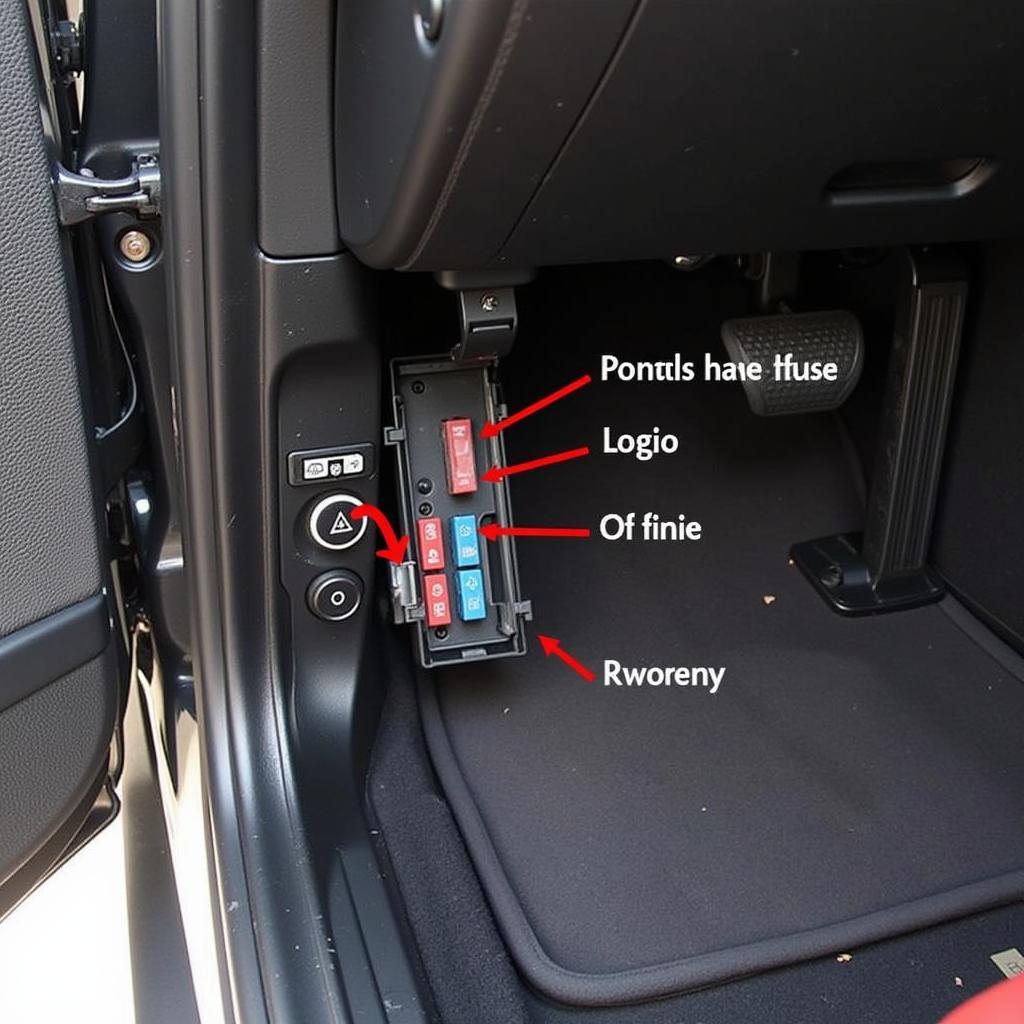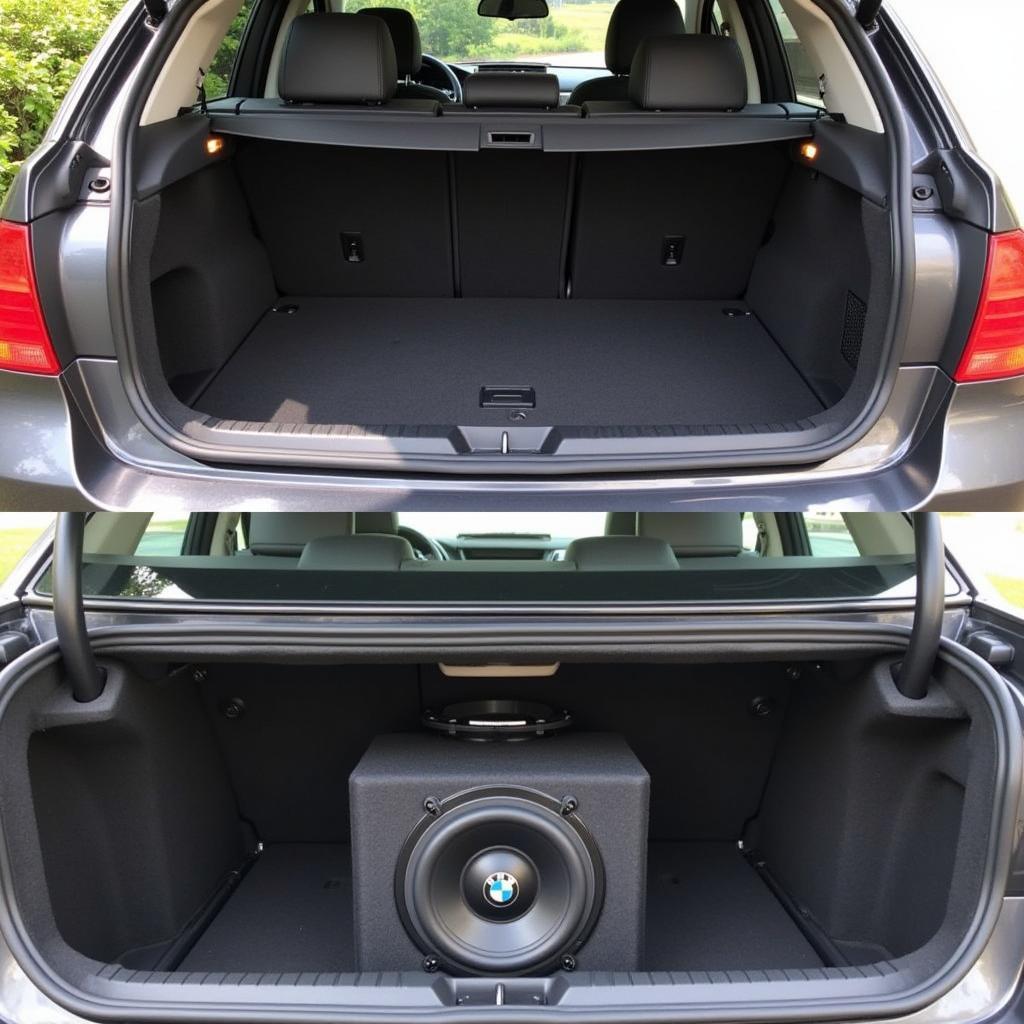The BMW i8’s fake engine sound, often a topic of discussion among car enthusiasts, adds a layer of complexity to this hybrid sports car. This article delves into the intricacies of this synthesized auditory experience, exploring its purpose, functionality, and the reactions it elicits.
Understanding the Need for Artificial Engine Noise in the BMW i8
Electric and hybrid vehicles, by their very nature, operate much more quietly than their gasoline-powered counterparts. This silence, while beneficial in reducing noise pollution, can pose a safety risk to pedestrians and cyclists who might not hear an approaching vehicle. The BMW i8, being a hybrid, utilizes an electric motor for propulsion at lower speeds and a gasoline engine at higher speeds. This transition can be almost imperceptible, hence the need for an artificial engine sound to alert those outside the vehicle. This synthesized sound isn’t just a random noise; it’s carefully engineered to provide auditory feedback to the driver and enhance the overall driving experience.
Safety First: The Primary Purpose of the BMW i8’s Acoustic Enhancement
The primary reason for the BMW i8’s fake engine sound is pedestrian safety. The quiet operation of the electric motor makes the car virtually silent at low speeds, posing a potential hazard to those sharing the road. The artificial sound alerts pedestrians and cyclists to the car’s presence, mitigating the risk of accidents. Regulations in many countries mandate a minimum sound level for electric and hybrid vehicles at low speeds, and the BMW i8’s sound system complies with these requirements.
Enhancing the Driving Experience: The Secondary Role of the Synthesized Sound
Beyond safety, the artificial engine sound also contributes to the driving experience. It provides the driver with auditory feedback, creating a more engaging and connected feel. This is particularly important in a sports car like the i8, where the driver expects a certain level of auditory stimulation. The synthesized sound adds a layer of excitement and reinforces the sporty character of the vehicle.
The Technology Behind the BMW i8’s Fake Engine Sound
The BMW i8’s engine sound is generated electronically. It’s not a recording of a traditional combustion engine but rather a synthesized sound created specifically for the i8. This allows for greater control over the sound characteristics, allowing BMW to tailor the sound to match the car’s performance and driving mode. The sound is projected both inside and outside the vehicle, using different speakers for each.
External Sound Projection: Alerting Pedestrians and Cyclists
The external sound is projected through speakers located at the front and rear of the vehicle. This ensures that the sound is audible to pedestrians and cyclists in all directions. The volume and characteristics of the sound vary depending on the car’s speed and driving mode. At higher speeds, the sound gradually fades out as the natural engine noise becomes more prominent.
Internal Sound Enhancement: Immersing the Driver
Inside the cabin, the synthesized sound is played through the car’s audio system. This provides the driver with a more engaging driving experience. The sound is carefully tuned to match the car’s performance and driving mode, creating a sense of connection between the driver and the vehicle.
Controversies and Criticisms Surrounding the Artificial Sound
While the fake engine sound serves a practical purpose, it has also been the subject of controversy. Some critics argue that it’s inauthentic and detracts from the pure electric driving experience. Others question the need for artificial sound at all, suggesting that drivers should adapt to the quietness of electric vehicles.
“The use of artificial engine sounds in electric vehicles is a complex issue,” says Dr. Emily Carter, an automotive acoustics engineer. “While it addresses safety concerns, it also raises questions about authenticity and the future soundscape of our cities.”
The Authenticity Debate: Is it a Necessary Evil?
The debate over the authenticity of artificial engine sounds is ongoing. Purists argue that electric vehicles should embrace their quiet operation and that artificial sounds are unnecessary and even deceptive. However, proponents counter that these sounds are essential for safety and enhance the driving experience, particularly in performance-oriented models like the i8.
The Future of Soundscapes: Rethinking Urban Acoustics
The increasing adoption of electric vehicles will significantly impact the urban soundscape. The absence of traditional engine noise will create quieter environments, but also potentially increase the risk of accidents involving pedestrians and cyclists. The future likely involves a careful balance between quiet operation and necessary acoustic warnings, with ongoing research and development into innovative sound solutions.
 Electric Vehicles and the Changing Urban Soundscape
Electric Vehicles and the Changing Urban Soundscape
Conclusion: Balancing Safety and the Driving Experience
The BMW i8’s fake engine sound is a complex topic with both benefits and drawbacks. While some may view it as artificial, it plays a crucial role in pedestrian safety and enhances the driving experience. As electric and hybrid vehicles become more prevalent, the debate surrounding artificial engine sounds will likely continue. The ultimate goal is to find a balance between safety, driver satisfaction, and the evolving soundscape of our cities. Understanding the purpose and technology behind the i8’s artificial sound provides valuable insight into the ongoing evolution of automotive engineering.
FAQ
- Why does the BMW i8 have a fake engine sound? Primarily for pedestrian safety, especially at low speeds where the electric motor is nearly silent.
- How is the sound generated? Electronically, through a synthesized sound system, not a recording of a traditional engine.
- Is the sound played inside the car as well? Yes, to enhance the driver’s experience and provide feedback.
- Does the sound change with driving modes? Yes, the volume and characteristics of the sound adapt to the car’s speed and driving mode.
- Is the fake engine sound required by law? Many countries have regulations requiring minimum sound levels for electric and hybrid vehicles at low speeds.
- What are the criticisms of the fake engine sound? Some argue it’s inauthentic and detracts from the electric driving experience.
- What is the future of engine sounds in electric vehicles? Finding a balance between quiet operation, necessary safety warnings, and a pleasant urban soundscape.
Common Scenarios and Questions
- Scenario: You’re driving your i8 in electric mode and a pedestrian steps out in front of you. The pedestrian likely heard the external sound warning, preventing a potential accident.
- Question: Can I turn off the fake engine sound? No, the external sound is mandated for safety reasons and cannot be disabled.
Further Exploration
Explore other articles on CARDIAGTECH about BMW i8 diagnostics and troubleshooting. Learn more about hybrid vehicle technology and the future of electric cars.
Need assistance with your BMW i8 or have questions about its unique sound system? Contact us via WhatsApp: +1 (641) 206-8880, Email: CARDIAGTECH[email protected] or visit us at 276 Reock St, City of Orange, NJ 07050, United States. Our team is available 24/7 to assist you.


